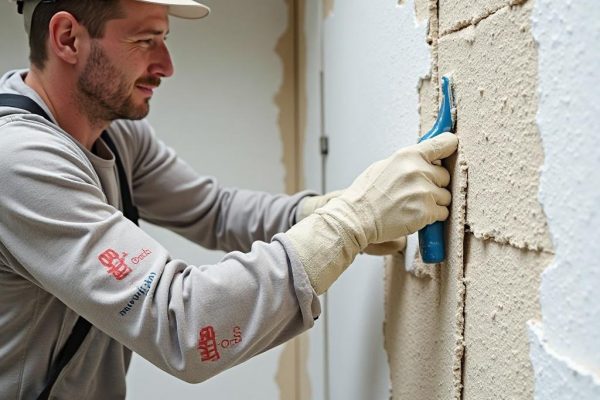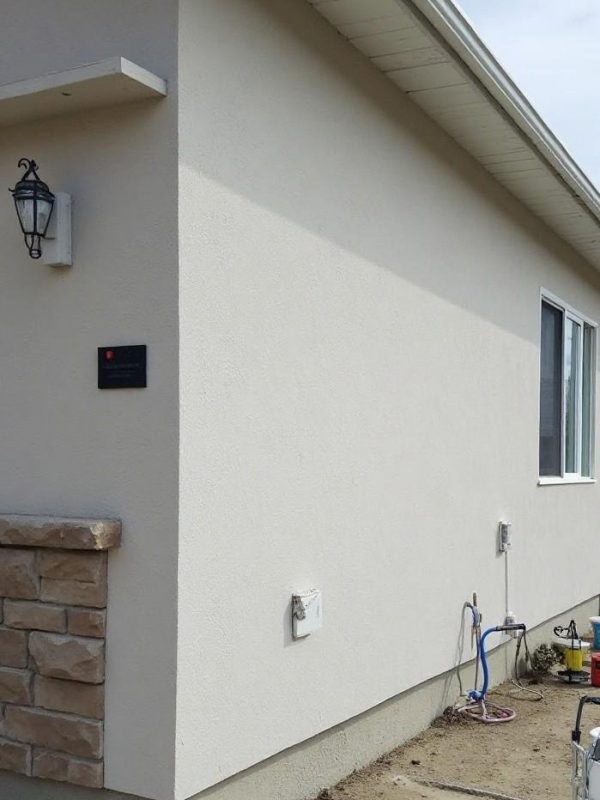
Can You Repair Stucco Yourself?
Stucco is a popular choice for exterior walls in many homes, especially in areas like Fort Saskatchewan, AB, Canada. It's durable, weather-resistant, and offers a unique aesthetic appeal. However, over time, stucco can develop cracks and damage due to various factors such as weather conditions or settling of the foundation. Many homeowners wonder: Can you repair stucco yourself? This article will provide a comprehensive guide to understanding stucco repair and whether it's feasible to tackle the job on your own.
Understanding Stucco
What Is Stucco?
Stucco is a mixture of cement, sand, and lime that creates a hard, durable exterior finish for buildings. It’s applied in multiple layers over a wire mesh and provides excellent insulation. In Fort Saskatchewan's climate, stucco serves as an effective barrier against cold temperatures and moisture.

Benefits of Stucco
Common Problems with Stucco
Cracks in Stucco
Cracks are the most common issue homeowners face with stucco. They can occur due to temperature changes or settling foundations.
Water Damage
Water intrusion can lead to mold growth and structural issues if not addressed promptly.
Chipping and Peeling
Over time, stucco may chip or peel away due to weather exposure or poor initial application.
Can You Repair Stucco Yourself?
Yes, many homeowners can successfully repair stucco themselves with the right tools and knowledge. However, it’s essential to assess the damage before deciding on a DIY approach.
Assessing Damage Before Repairing
Before starting any repairs, inspect your stucco closely:

- Look for cracks larger than 1/8 inch.
- Check for signs of water damage or mold.
- Assess whether the damage is cosmetic or structural.
If you find significant issues that compromise your home’s integrity, consulting a professional may be necessary.
Tools Needed for Stucco Repair
To tackle stupendous stucco repairs yourself, gather these tools:
Materials Required for Stucco Repair
Here’s what you’ll need:
- Stucco mix (premixed or dry)
- Water
- Bonding agent (if required)
- Primer (for repainting)
Step-by-Step Guide to Repairing Stucco Yourself
Step 1: Prepare the Area
Start by cleaning around the damaged area using a wire brush to remove loose debris.
Step 2: Apply Bonding Agent
If you're using a bonding agent, apply it now for better adhesion when you add new stucco.
Step 3: Mix Your Stucco
Follow the manufacturer's instructions carefully when mixing your stucco compound.
Step 4: Apply New Stucco
Using your trowel, apply the mixed stucco into the damaged area evenly.
Step 5: Texture Matching (if needed)
For texture matching, use different tools like brushes or sponges depending on your existing finish.
Step 6: Curing Process
Allow the new stucco to cure properly by keeping it moist for several days after application.
When to Call Professionals for Stucco Repair?
While DIY repairs can save money and be rewarding, some situations require professional intervention:
- Large cracks or extensive water damage.
- Structural issues that affect home safety.
- Lack of experience or tools needed for proper repair.
Cost Considerations for DIY vs Professional Repairs
Doing it yourself often saves labor costs but keep in mind material prices and potential mistakes that could inflate expenses later on. A professional may charge between $50-$100 per hour depending on complexity and local rates in Fort Saskatchewan.
| Item | DIY Cost Estimate | Professional Cost Estimate | |-------------------|------------------|----------------------------| | Materials | $50 - $150 | Included in total cost | | Labor | None | $50 - $100 per hour | | Total (Small Jobs)| $50 - $150 | $200 - $500 |
Preventive Measures Post Repair
Once you've completed your repairs:
- Regularly inspect your stucco.
- Clean gutters to prevent water overflow.
- Ensure proper drainage around your home's foundation.
FAQs About Stucco Repair
Q1: How long does stucco repair take?
A1: Small repairs can take just a few hours; allowing curing time may extend this process over several days.
Q2: What if I see mold on my stucco?
A2: Mold needs immediate attention; consider professional help if it’s widespread.
Q3: Can I paint over repaired stucco?
A3: Yes! After allowing adequate drying time post-repair—usually around two weeks—you can paint it using appropriate exterior paint.
Q4: How do I know if my crack needs urgent attention?
A4: If cracks exceed 1/8 inch wide or show signs of water entry—such as discoloration—it’s best to address them quickly with repairs or professional evaluation.
Q5: What tools do I need specifically for texture matching?
A5: Common tools include sponges, brooms, brushes, and trowels that match your original texture style.
Q6: Are there any seasonal considerations for repairing stucco?
A6: Yes! The best time is usually late spring through early fall when temperatures are stable above freezing.
Conclusion
In summary, homeowners in Fort Saskatchewan facing minor issues with their stuccos might find themselves capable of handling repairs without hiring professionals—provided they have the right tools and follow simple steps outlined here. Still unsure about tackling it alone? Don’t hesitate to consult local experts who specialize stucco repair solutions in stucco repair. Remember that maintaining your home keeps its value high while ensuring comfort year-round!